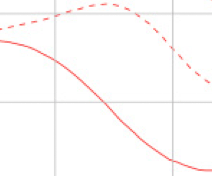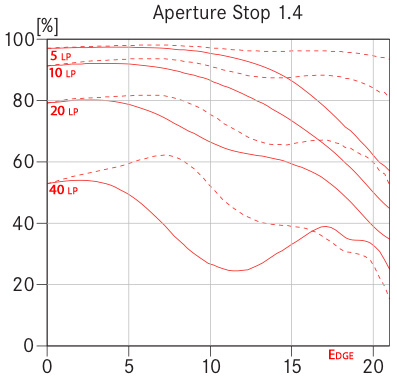EXCERPT page containing first few paragraphs. 2024-04-18 04:03:21
UA_SEARCH_BOT_null @ 18.191.195.110
For full access, subscribe here. Or click title to login. ![]()

Reading MTF Charts
An MTF chart carries a lot of information, but it’s only a snapshot of the overall performance. And with some designs, the MTF chart can look dubious: it requires a proper reading to understand why the curves are shaped the way they are; some outstanding lenses have MTF charts that look rather poor at first glance.
The main complication is field curvature, which can make MTF look poor, since MTF is measured on a planar imaging surface/subject. An inflection point (change in slope of the curve) usually means field curvature, and thus one can interpolate maximum performance from the highest areas, with an eye to making real images to verify that the “dips” are due to field curvature, and not simply poor performance.
Article continues for subscribers...
Diglloyd Making Sharp Images is by yearly subscription. Subscribe now for about 13 cents a day ($50/year).
BEST DEAL: get full access to ALL 8 PUBLICATIONS for only about 75 cents a day!
Diglloyd Making Sharp Images articulates years of best practices and how-to, painstakingly learned over a decade of camera and lens evaluation.
Save yourself those years of trial and error by jump-starting your photographic technical execution when making the image. The best lens or camera is handicapped if the photographer fails to master perfect shot discipline. High-resolution digital cameras are unforgiving of errors, at least if one wants the best possible results.
- Eases into photographic challenges with an introductory section.
- Covers aspects of digital sensor technology that relate to getting the best image quality.
- Technique section discusses every aspect of making a sharp image handheld or on a tripod.
- Depth of field and how to bypass depth of field limitations via focus stacking.
- Optical aberrations: what they are, what they look like, and what to do about them.
- MTF, field curvature, focus shift: insight into the limitations of lab tests and why imaging performance is far more complex than it appears.
- Optical aberrations: what they are, what they look like, and what to do about them.
- How to test a lens for a “bad sample”.
Intrigued? See Focusing Zeiss DSLR Lenses For Peak Performance, PART ONE: The Challenges, or (one topic of many) field curvature.


